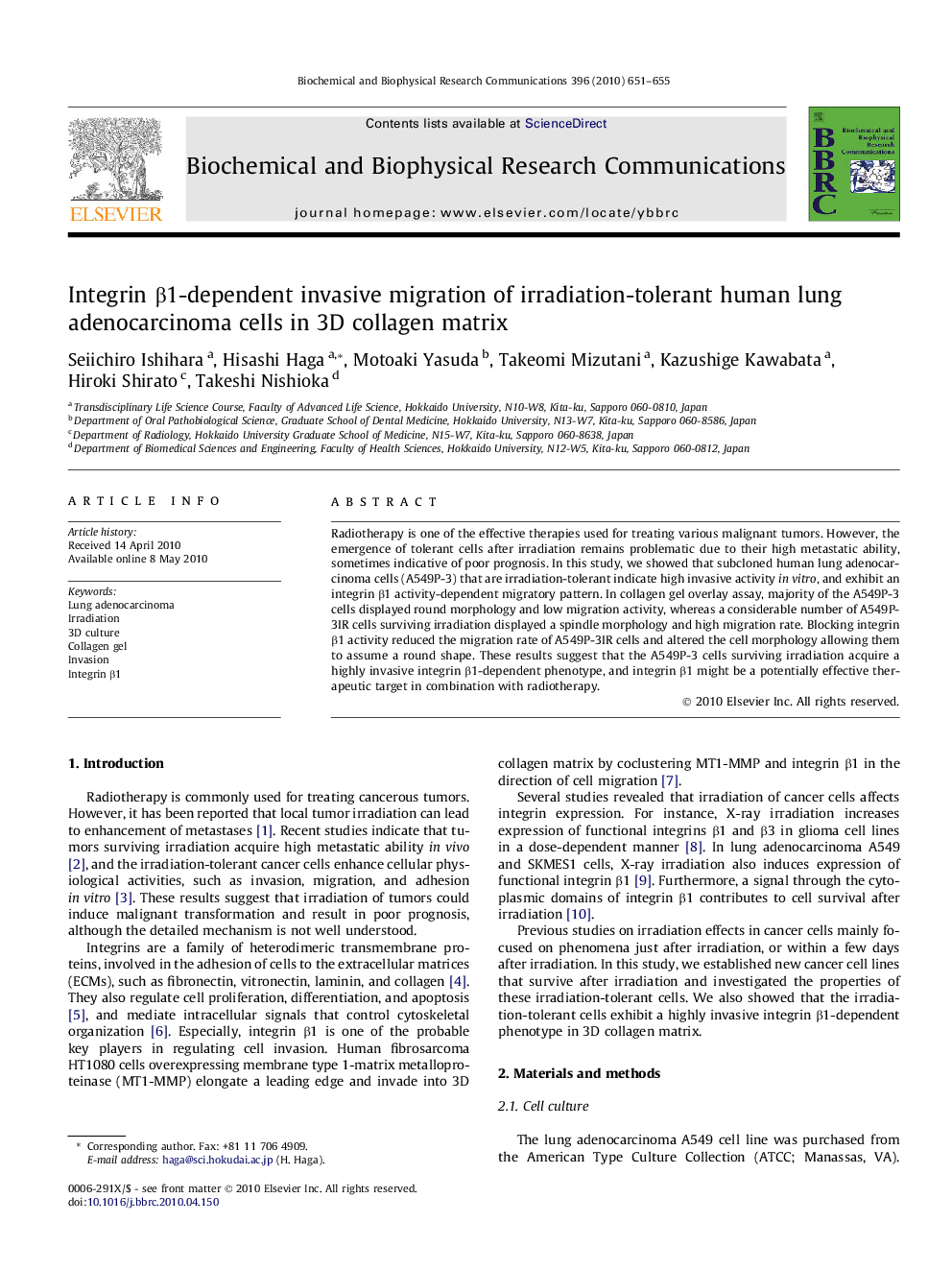| Article ID | Journal | Published Year | Pages | File Type |
|---|---|---|---|---|
| 10764692 | Biochemical and Biophysical Research Communications | 2010 | 5 Pages |
Abstract
Radiotherapy is one of the effective therapies used for treating various malignant tumors. However, the emergence of tolerant cells after irradiation remains problematic due to their high metastatic ability, sometimes indicative of poor prognosis. In this study, we showed that subcloned human lung adenocarcinoma cells (A549P-3) that are irradiation-tolerant indicate high invasive activity in vitro, and exhibit an integrin β1 activity-dependent migratory pattern. In collagen gel overlay assay, majority of the A549P-3 cells displayed round morphology and low migration activity, whereas a considerable number of A549P-3IR cells surviving irradiation displayed a spindle morphology and high migration rate. Blocking integrin β1 activity reduced the migration rate of A549P-3IR cells and altered the cell morphology allowing them to assume a round shape. These results suggest that the A549P-3 cells surviving irradiation acquire a highly invasive integrin β1-dependent phenotype, and integrin β1 might be a potentially effective therapeutic target in combination with radiotherapy.
Related Topics
Life Sciences
Biochemistry, Genetics and Molecular Biology
Biochemistry
Authors
Seiichiro Ishihara, Hisashi Haga, Motoaki Yasuda, Takeomi Mizutani, Kazushige Kawabata, Hiroki Shirato, Takeshi Nishioka,
